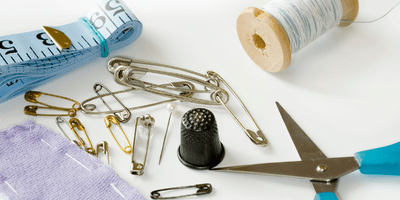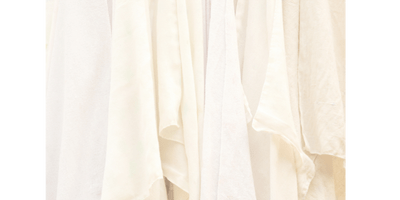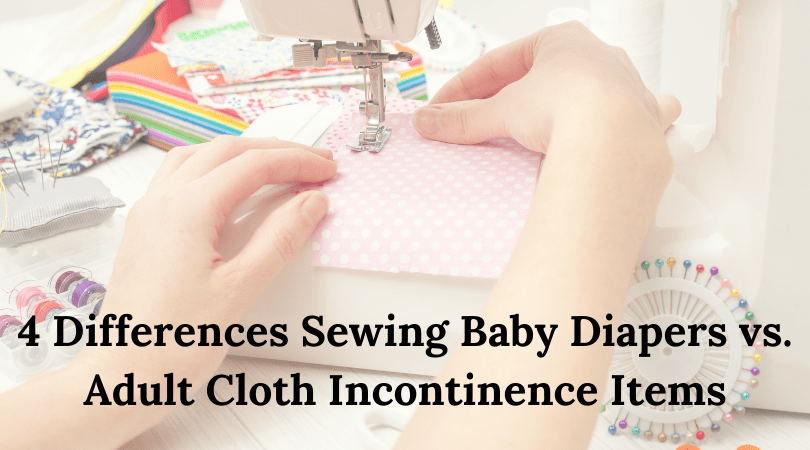When it comes to sewing adult cloth incontinence items, it can be tempting to turn to websites and tutorials on baby cloth diapers for information. Which is only fair since there’s not a lot of info out there on making your own cloth incontinence products beyond cloth pads. While there is a lot of crossover and relevancy between baby cloth diapers and adult cloth diapers and incontinence products, there are some key differences to keep in mind before making your own.
To learn more about sewing your own cloth incontinence items, check out this post: How to Get Started Sewing Adult Cloth Diapers.
1. Sewing patterns aren’t the same: Children and adults have different proportions
This is probably the biggest and least understood difference between baby and adult cloth items. As a sewer, you may be tempted to take that baby pattern and just “size it up.” While this may work sometimes, it is not always a sure bet.
At the end of the day adult and children’s body shapes are different. This is very important as the actual construction and proportions of a pattern needs to change to accommodate these differences.
For example, the waist/hip ratio for adults is larger than in children because adults – especially women- have larger hips. Until puberty, children’s’ bodies tend to have only a slight differentiation between the natural waist and low hip measurement.
In addition, the rise – length from center front to center back – of children’s products does not need to be quite as long as the derriere of children is not quite as, uh, shapely as in adults.
When I draft out my adult incontinence patterns, I know that a pull on item must both be big enough to go over the widest part of the hips, but also be small enough to give a snug fit on the waistband. So for children, I don’t need to make the pattern quite as wide or as curvy as I would for an adult.
That said, once you get to a child size 15/16, the measurements and proportions of the body start to overlap with adult sizes.
2. Sewing adult incontinence products requires different notions

Hook and loop tape, aka Velcro, needs to be wider. The 1.5” hook and loop tape used on baby and toddler items just isn’t strong enough to hold up adult sized wet fabric
I have found that the 2” Velcro from onlinefabricstore.net is good quality and way cheaper than anywhere else. Even cheaper than using a coupon at Joann Fabric and Craft!
For snaps, many adult items use 3 rows of snaps for a more secure fit. Though, as a sewer, you can always choose NOT to use 3 rows 🙂 Some brands also use the bigger size 22 snaps.
I like to use the bigger size 22 snaps because they are easier to snap. Many people who deal with incontinence also deal with other medical or physical issues, and these also need to be addressed in the construction of an item, such as using larger snaps for those with finger dexterity challenges — whereas it’s not an issue in baby items.
In addition, waistband elastic needs to be wider, particularly if used in a casing. In these cases 1” elastic works best. Other styles need ½” elastic. Most baby diaper and toddler products use ¼” to ⅜” elastics, though both adult and baby products use 1” fold over elastic (FOE).
For more info on notions needed for sewing cloth incontinence products, check out my post on notions.
3. There are a lot of different types of adult cloth incontinence products
In the baby cloth diaper world, there are basically diapers, pull ups, and training pants. While these cover a wide range of needs for babies to potty training toddlers, adults’ needs are more variable.
For example, many folks with light bladder leaks prefer to use cloth pads, which are non-existent in the baby world. The same goes with leak proof underwear. Child training pants tend to not have a waterproof barrier as the point is to make the child feel like they are wet while reducing the footprint of an accident. For adults, feeling wet or having any accident footprint (aka, leakage) are not ideal outcomes.
Though to be fair, the adult cloth incontinence world has benefited from many of the design advances in the baby cloth diapering world. It completely blows my mind how many baby cloth diapering companies there are. Seriously, how can they ALL be in business, lol?!
Interestingly, many of the custom designs I’ve created over the years have come from customer requests to make an adult sized version of a baby cloth diaper that had unique and helpful features.
Regardless, if you are looking into sewing your own adult cloth incontinence products, just know that there are more options available for adults than what you might see for babies and toddlers.
4. Adult cloth incontinence products do not always use the same fabrics

Of course, such staying power can come at the price of skin irritation, but that’s a whole other story.
Adult cloth incontinence products also often use polyester and polyester blended cotton, which you only find in the cheaper baby cloth diaper options. But in the game of “how cost effective can I make this product,” the adult cloth incontinence world is able to hit a bottom line that many baby cloth diaper companies can’t. Because honestly, some baby cloth diapers are more expensive than adult ones.
However, one of the glories of making your own cloth incontinence products is that you have the autonomy to choose what goes into your product. You can use high quality fabrics or you can use cheap ones. Either way, you’ll be saving money on your products.
Alecia
Latest posts by Alecia (see all)
- How to Make a Cloth Diaper Bigger - August 21, 2023
- Best Swim Diapers for Adults and Youth - July 18, 2023
- Adult Cloth Diaper Hacks: How to Make a Swim Diaper - July 14, 2023


